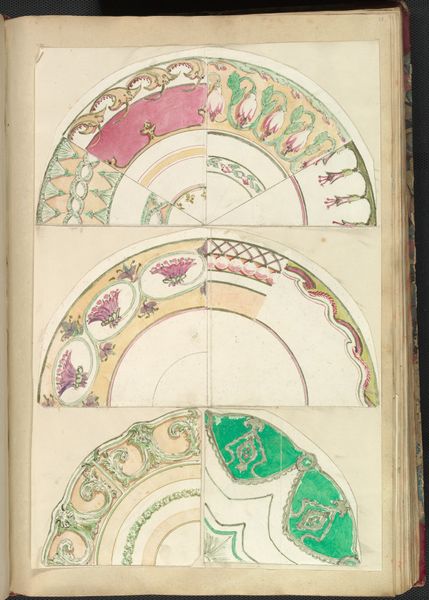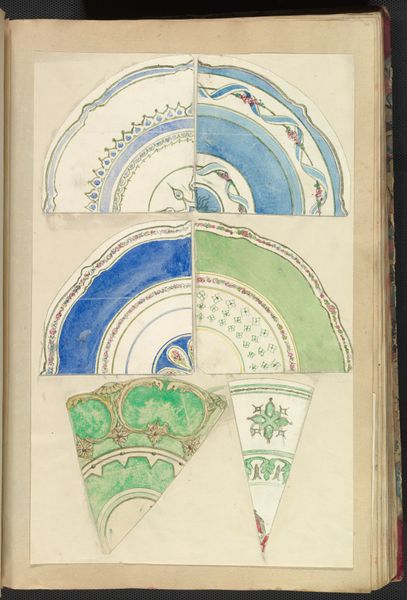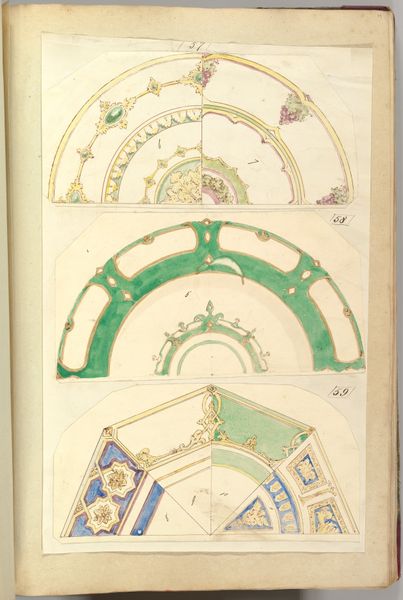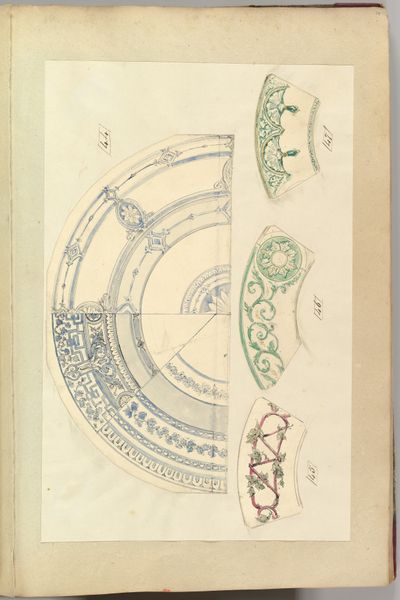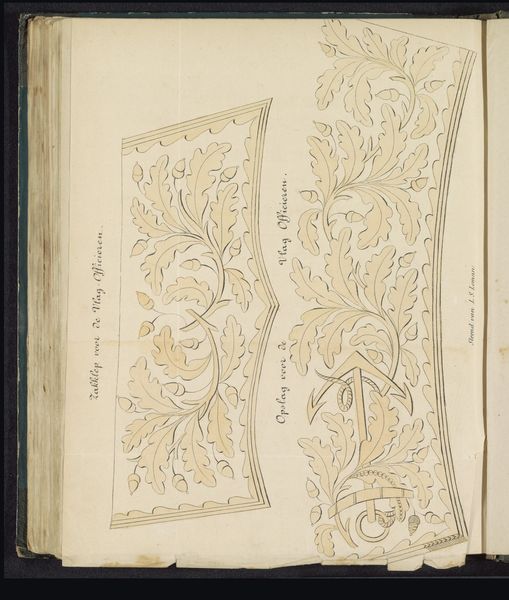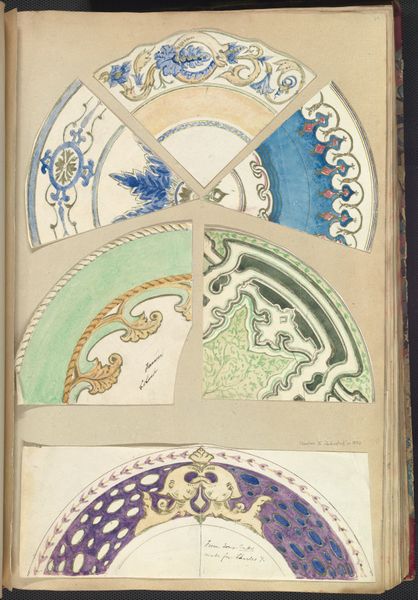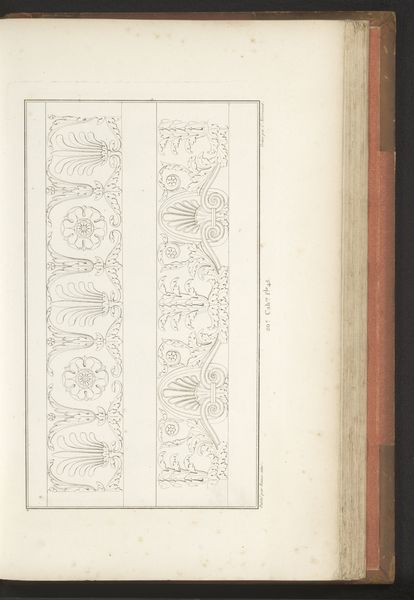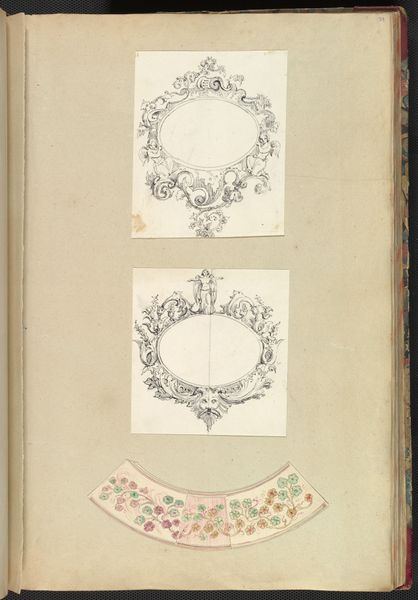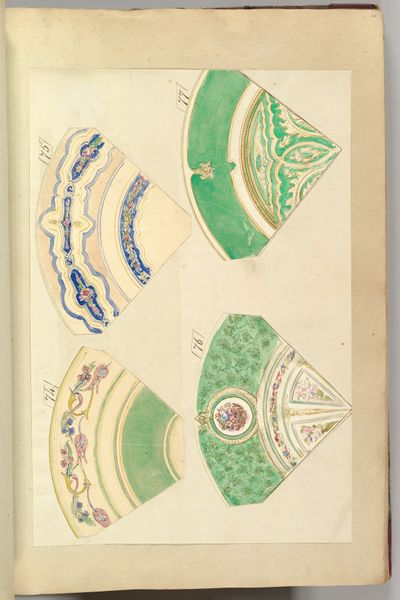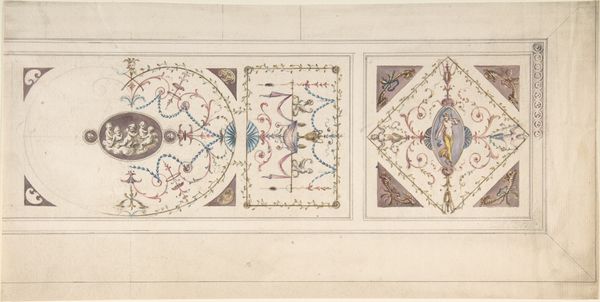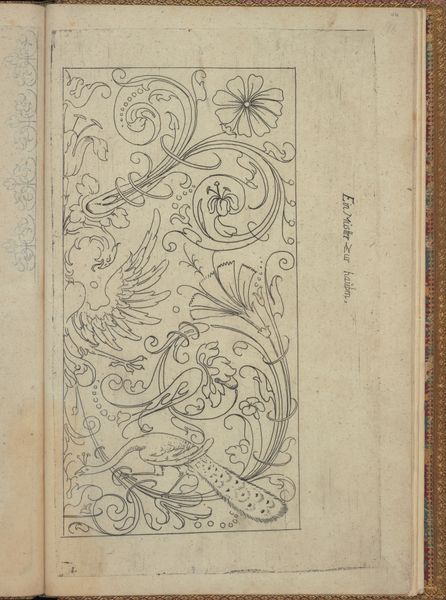
drawing, print, paper, watercolor
#
drawing
# print
#
paper
#
watercolor
#
coloured pencil
#
decorative-art
Dimensions: sheet: 16 3/4 x 11 7/16 in. (42.5 x 29 cm)
Copyright: Public Domain
Curator: Alfred Henry Forrester, sometimes known as Alfred Crowquill, created this page of “Five Designs for Decorated Plates” sometime between 1845 and 1855. The medium is a combination of drawing, print, and watercolor on paper. Editor: My first thought is that this feels delicate and aspirational. I’m drawn to the floral elements—they feel both precious and symbolic of something larger than just tableware. Curator: It’s interesting you mention the tableware’s role. In examining the materials, it strikes me that these designs offer a glimpse into the emerging culture of consumerism and the aspirations of the burgeoning middle class in Victorian England. Decorative arts, particularly those designed for the table, served as material expressions of status. Editor: Precisely! Table settings were often heavily coded, and the designs reflect that. The emphasis on decoration tells a story of evolving gender roles as well, with women increasingly associated with the domestic sphere and its aesthetic presentation. Curator: There’s certainly an economic element too; printed designs would allow for mass production, bringing more affordable decoration to a wider market. Think about the labour involved, too, not just Forrester's as the designer, but also the many hands producing these plates, their skills and working conditions... Editor: Absolutely, and those designs circulated. What stories did these plates tell across different tables? I also wonder about the symbolic weight. Is it a subversion of traditional roles through elaborate, perhaps ironic, displays of domesticity? Curator: Possibly. While delicate, there's a rigor in the execution—you can see how the artist paid attention to the pattern, testing, trialing, working out the possibilities with watercolor. Editor: Seeing the possibilities inherent in this type of applied art is key. The accessibility and familiarity invite examination into social narratives that can so often get overlooked. Curator: A deeper understanding of decorative art leads to further examination of design in everyday life. Editor: It reveals a visual language through which aspirations are made both visible and attainable.
Comments
No comments
Be the first to comment and join the conversation on the ultimate creative platform.
